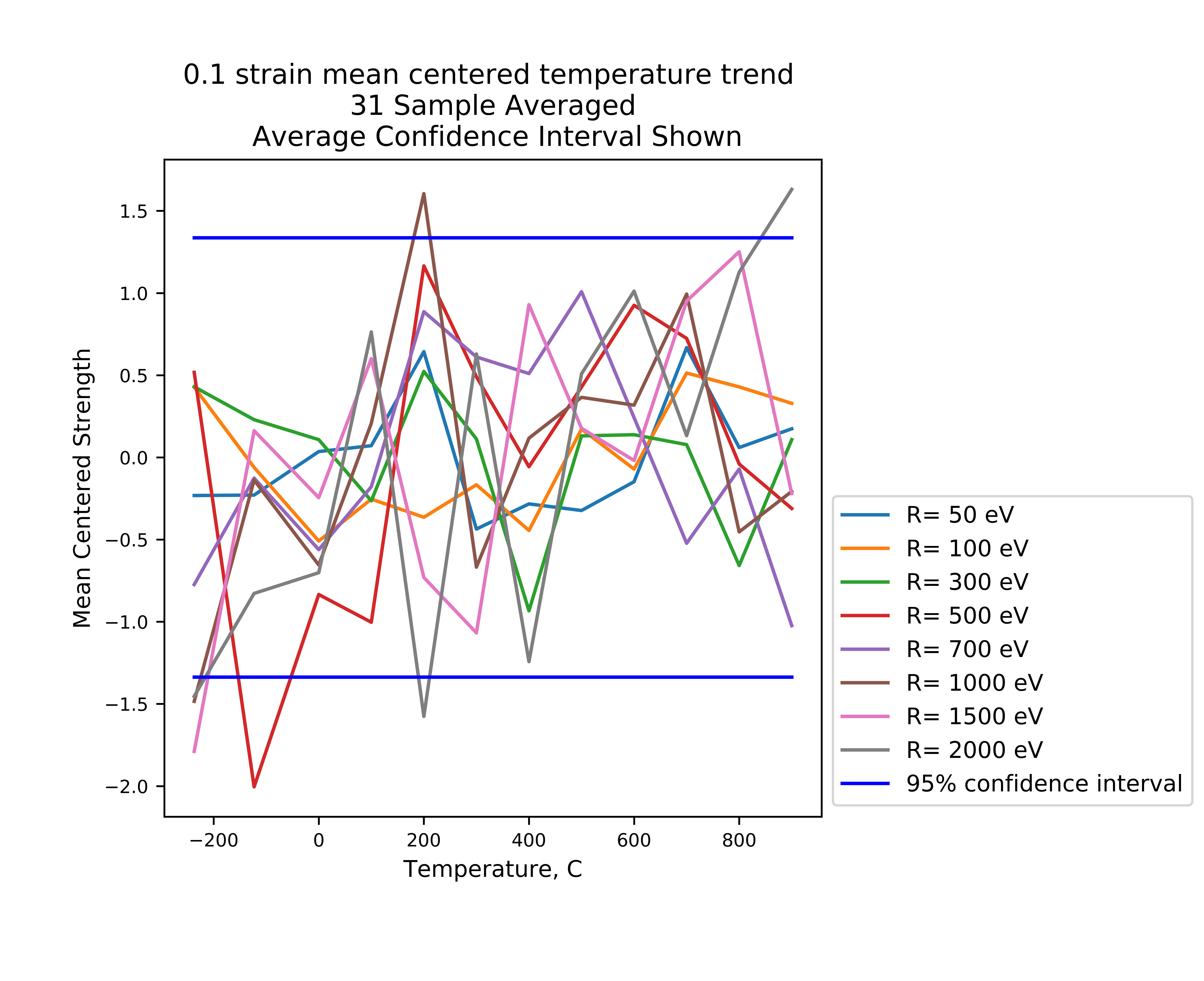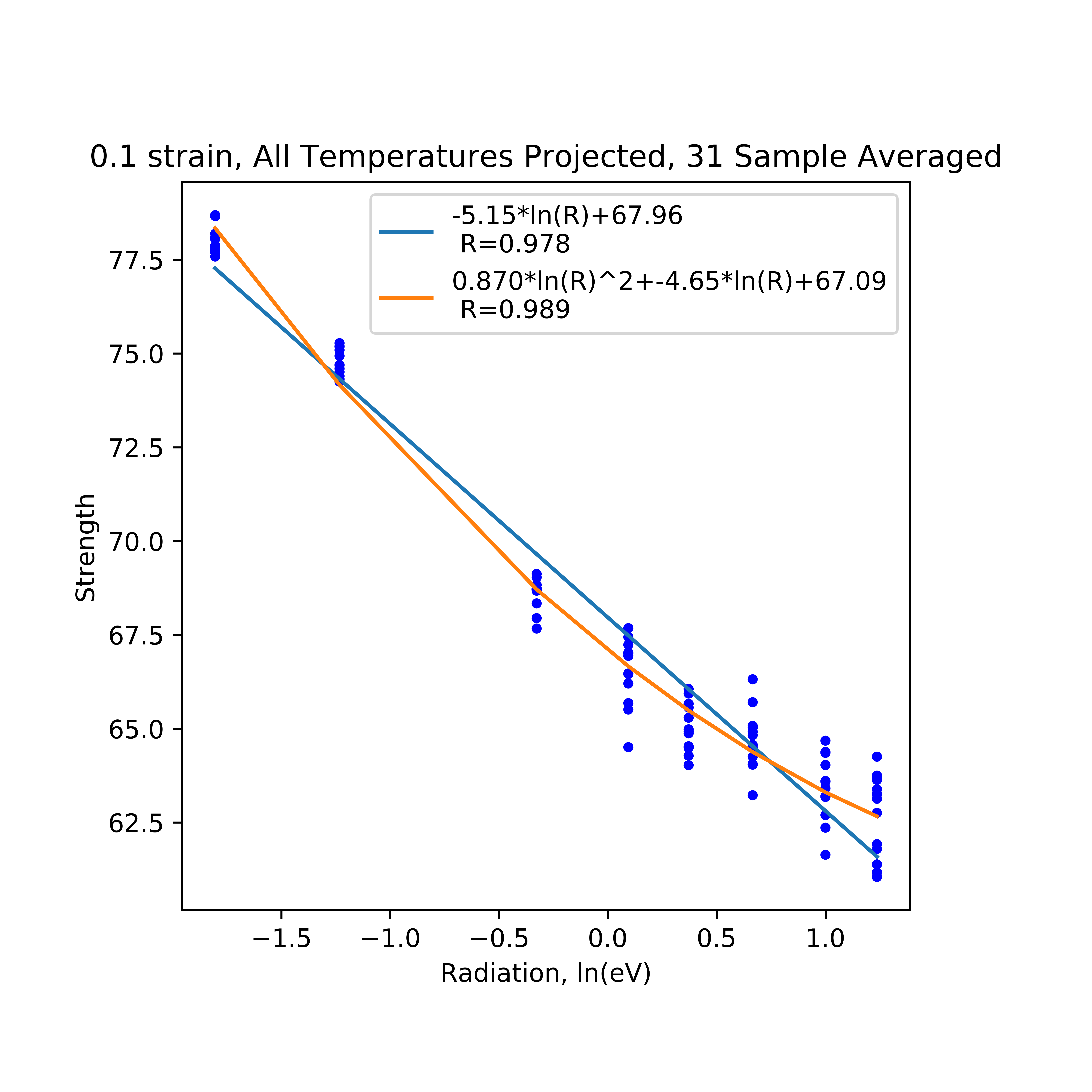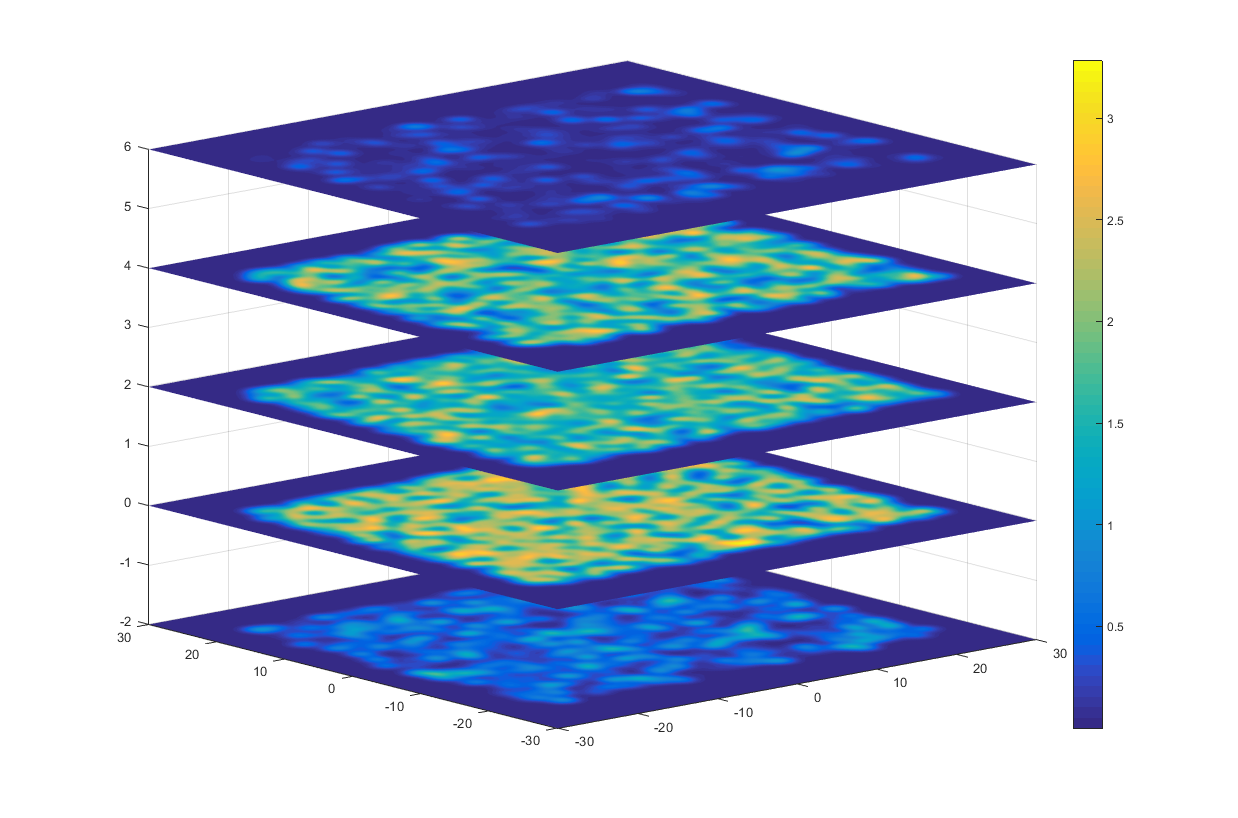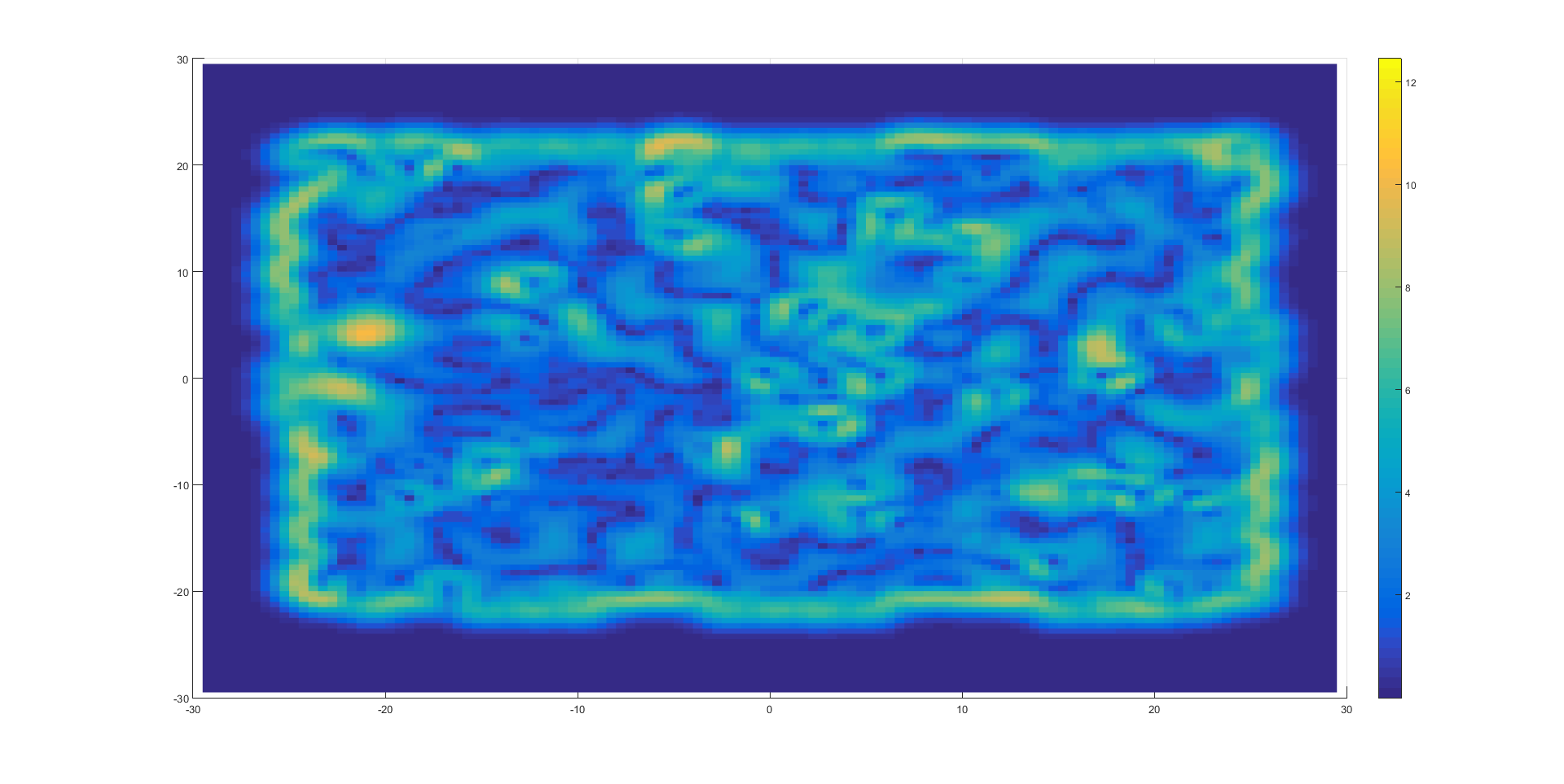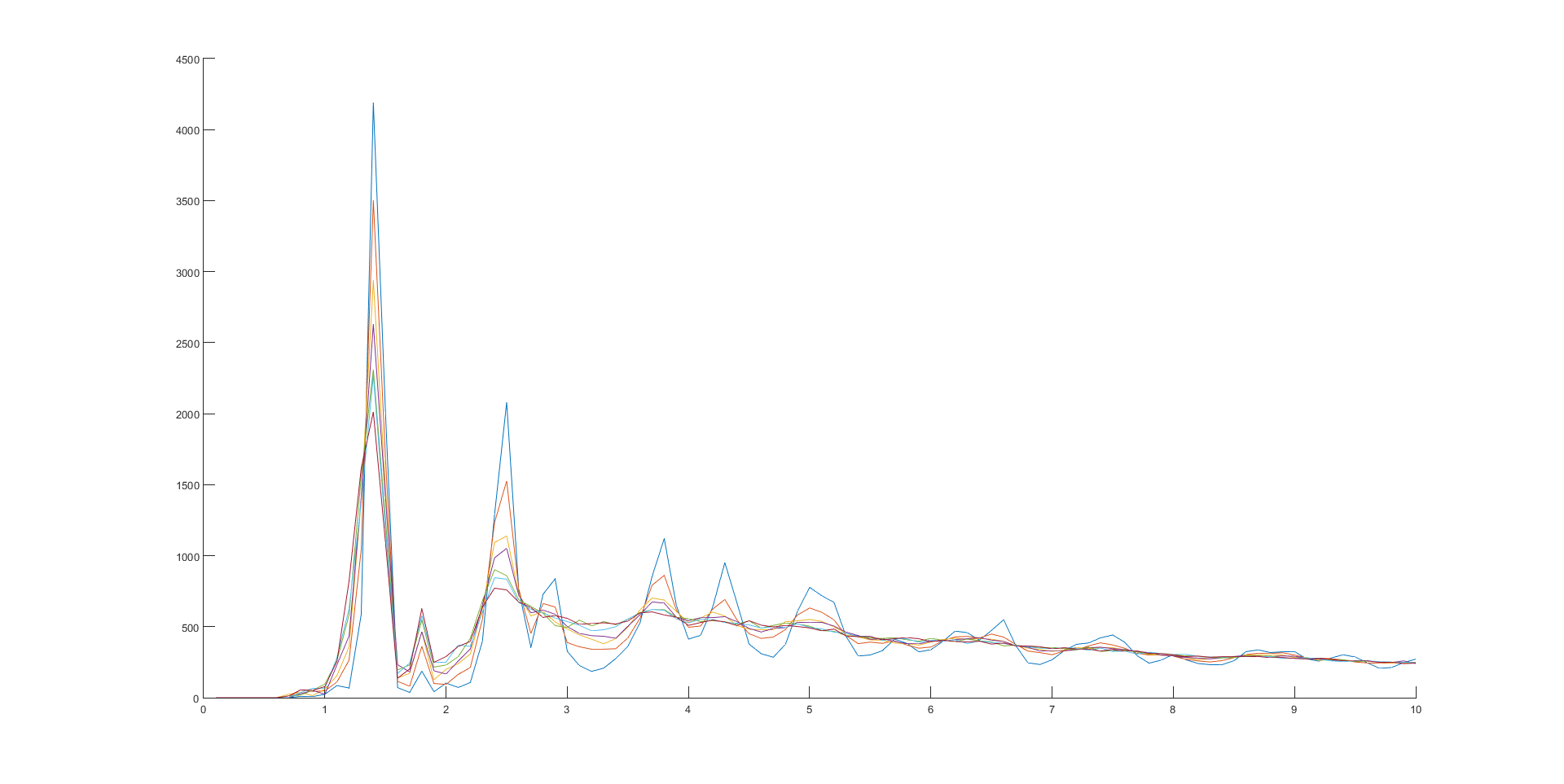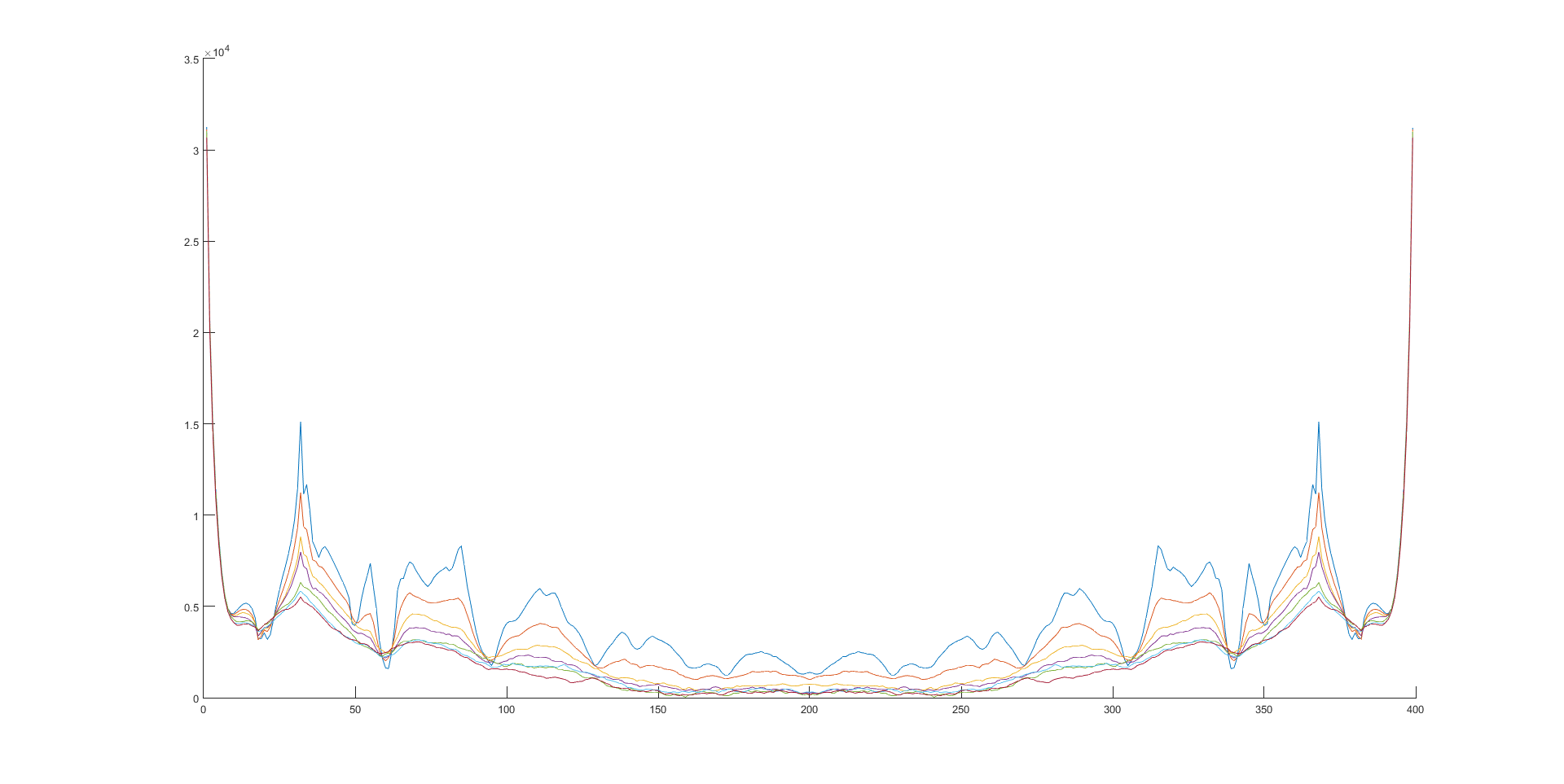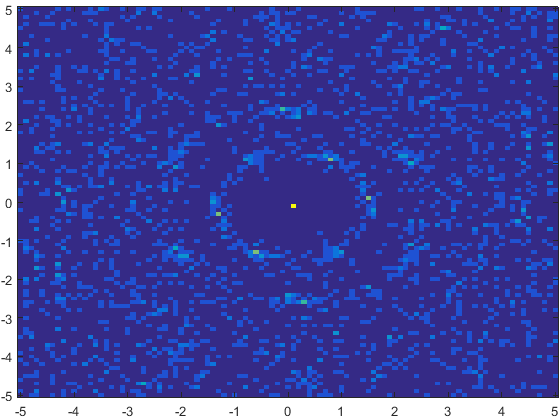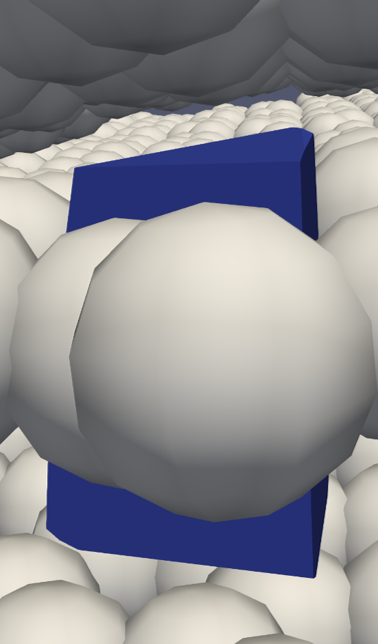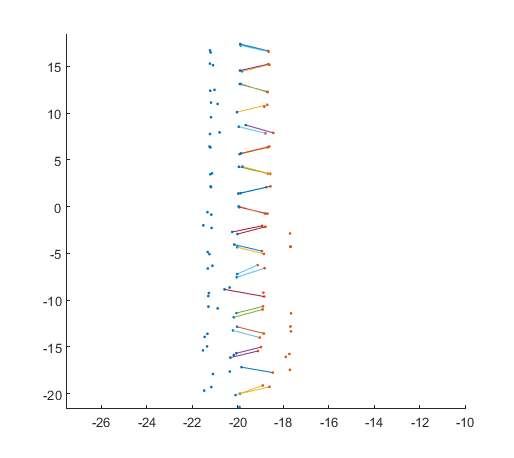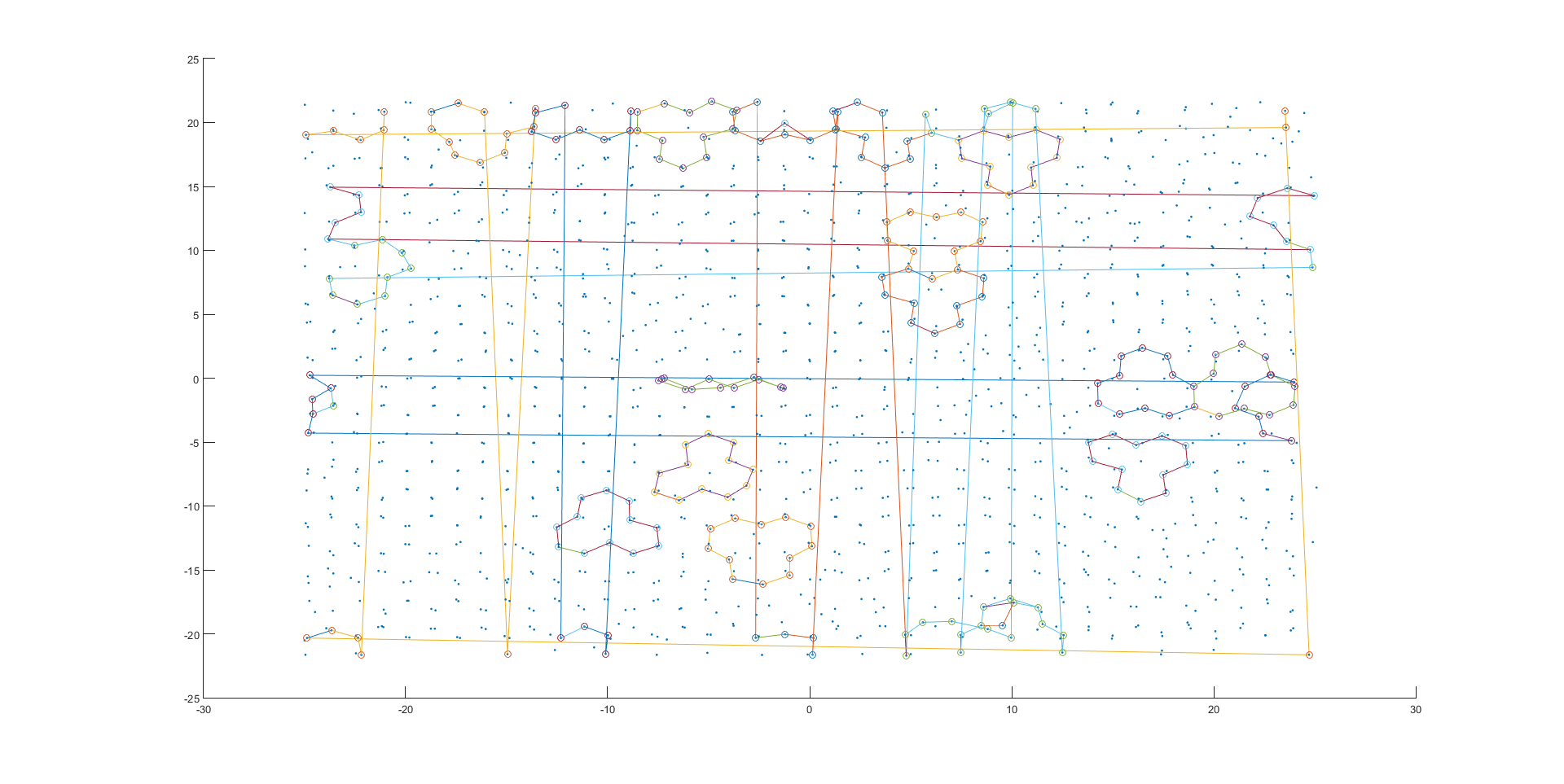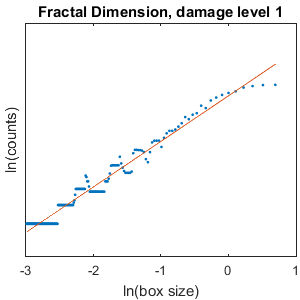Kyle Shepherd
Point Cloud Feature Analysis
Project Overview
When I started my PhD program with Dr. Rouzbeh Shahsavari, there was a senior PhD student named Lei Tao performing molecular dynamics simulations of various molecular systems. He was investigating tobermorite (an idealized crystal structure of cement), graphene, and hexagonal boron nitride under different conditions such as high temperature and radiation induced dislocations. To extract material properties from these systems, complex molecular dynamics simulations had to be performed, and a supercomputer was needed to simulate a reasonable number of structure geometries and conditions in a reasonable amount of time.
A overhead visualization of a hexagonal boron nitride system that was the subject of our investigations is shown below. Visualization produced using MATLAB.
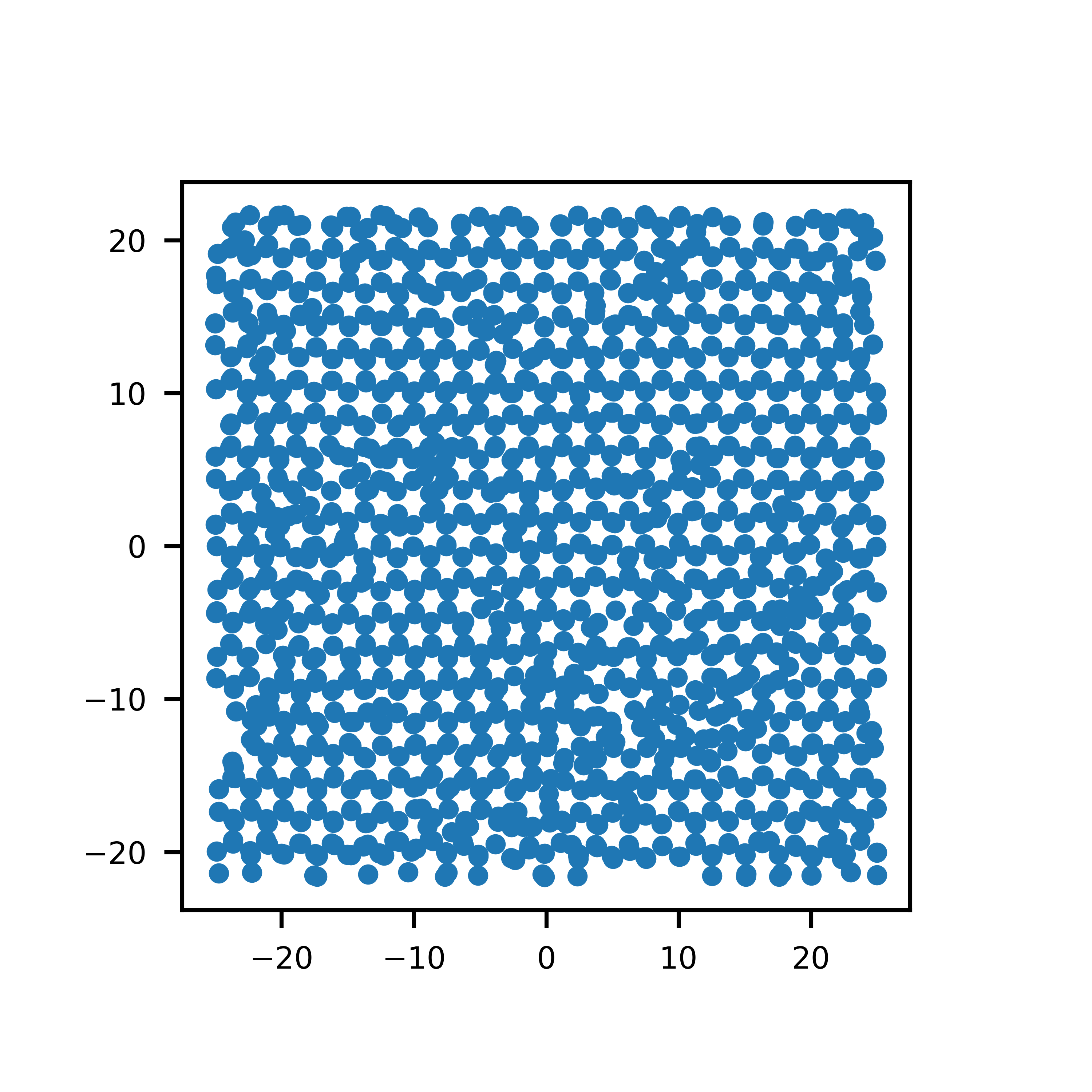
Our group wanted to see if we could use machine learning techniques to extract the wanted material properties while minimizing supercomputer time. The goal was to look at the starting crystal structure of the material, which is just point cloud data of atomic locations in space, and determine properties such as strength and toughness using supervised learning techniques. We also had a secondary goal to use unsupervised learning techniques to determine underlying mechanisms for the properties, such as stress concentrations or crack deflections or some other undiscovered mechanism.
The current status of this investigation is that no single feature of the
material is providing good predictions of the material properties, and no
combination of features is providing good results, no matter
what regression techniques or supervised learning techniques are used. However,
for almost each measured feature, a relationship in the below form
seems to best fit the available simulation data:
Property = A + B*ln(feature)
where A and B are regression fit constants
The ln() natural log function is closely
relation to entropy and disorder in molecular systems, so these relationships
seem to imply that the material properties are dependent on some underlying
disorder feature.
Project Details
A partial list of investigated features is shown below.
- Temperature
- Energy of radiation induced dislocation
- Density measurement with Gaussian Blur
- Edge detection using a Sobel operator
- Radial Distribution Function
- Fourier Transform of Radial Distribution Function
- Two Point Statistics
- Solvation volume, volume of union of spheres
- Bonds cut by a dividing plane
- Ring Statistics
- Fractal Dimension using box counting
